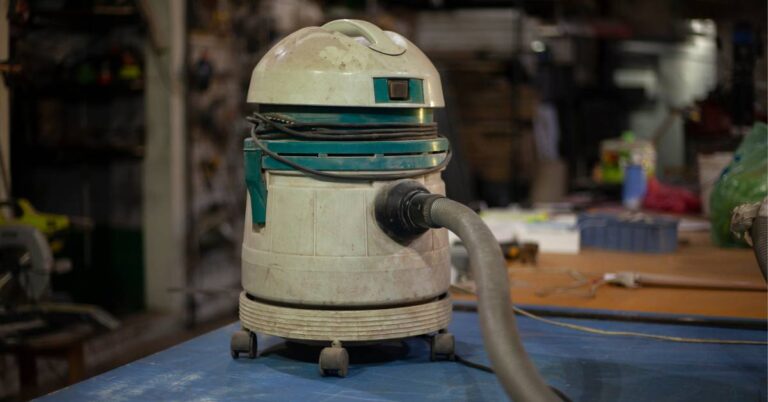Corded vs Cordless Jig Saw: Choosing the Right Tool for Your Projects
Jig saws are versatile power tools essential for many woodworking and DIY projects. When choosing a jig saw, one of the primary decisions is whether to opt for a corded or cordless model. Each type has its strengths and limitations that can significantly impact your work.
Corded jig saws offer consistent power and unlimited runtime, making them ideal for heavy-duty or prolonged cutting tasks. They typically deliver more cutting force and can handle thicker materials with ease. On the other hand, cordless jig saws provide unparalleled mobility and convenience. These battery-powered tools allow users to work in areas without access to electrical outlets, making them perfect for job sites or outdoor projects.
The choice between corded and cordless jig saws ultimately depends on your needs and working conditions. Consider factors such as the nature of your projects, workspace limitations, and frequency of use when making your decision. Both types of jig saws have their place in a well-equipped workshop or toolbox.
Key Takeaways
- Corded jig saws provide consistent power for heavy-duty tasks
- Cordless models offer superior portability and convenience
- The best choice depends on specific project requirements and working conditions
Understanding Jigsaws
Jigsaws are versatile power tools for making curved and straight cuts in various materials. They come in corded and cordless varieties, each with distinct features and capabilities.
Anatomy of a Jigsaw
A jigsaw consists of several vital components. The motor powers the tool, driving the blade up and down to cut through materials. The handle provides a comfortable grip for the user to control the saw. The baseplate, or shoe, rests on the workpiece surface to stabilize the tool during cutting.
Most jigsaws feature an adjustable orbital action setting. This setting controls the forward motion of the blade, allowing for faster, more aggressive cuts in certain materials. The blade clamp secures the blade in place, and some models offer tool-free blade changes for convenience.
Variable speed control allows users to match cutting speed to different materials and applications. Many jigsaws also include a dust blower to clear the cutting line of debris.
Corded vs Cordless Jigsaws
Corded jigsaws plug into an electrical outlet, providing consistent power for extended use. They tend to be more powerful than their cordless counterparts, making them suitable for heavy-duty tasks and more rigid materials.
Cordless jigsaws run on rechargeable battery packs, offering greater portability and flexibility. They’re ideal for job sites without easy access to power outlets. Battery technology has improved significantly, with many cordless models now rivalling corded versions in power and runtime.
Corded models eliminate the need for battery management but are limited by cord length. Cordless jigsaws provide freedom of movement but require periodic recharging or battery swaps during lengthy jobs.
Weight is another factor to consider. Cordless jigsaws often weigh more due to the battery pack, which can lead to increased user fatigue during prolonged use.
Performance and Power
Corded and cordless jig saws offer distinct performance characteristics. Their power sources impact cutting capabilities, motor efficiency, and operational duration differently.
Motor Efficiency and Output
Corded jig saws typically provide consistent power output. They draw electricity directly from wall outlets, enabling sustained high performance. Most corded models offer power ratings between 5 and 7 amps.
Cordless jig saws rely on battery power. Recent advancements in lithium-ion technology have improved their performance. Many cordless models now match corded saws in cutting power, with some offering 18 to 20-volt systems.
The motor efficiency of cordless tools has increased significantly. Brushless motors reduce friction and heat, extending battery life and enhancing overall performance.
Battery Life and Run Time
Cordless jig saws’ run time depends on battery capacity and usage intensity. Modern lithium-ion batteries provide more extended operational periods than older nickel-cadmium versions.
Typical run times for cordless jig saws range from 30 minutes to 2 hours per charge. Factors affecting battery life include:
- Cutting material hardness
- Blade type
- Cutting speed
- Battery amp-hour rating
Many manufacturers offer quick-charge options, allowing users to recharge batteries in 30-60 minutes.
Cutting Capabilities
Both corded and cordless jig saws can handle a variety of materials. Their cutting capabilities depend on motor power, blade type, and orbital action settings.
Corded jig saws excel at prolonged cutting of rigid materials. They maintain consistent power for cutting hardwood, metal, and thick plywood without performance drop-off.
Cordless models have improved significantly in cutting rigid materials. High-end cordless jig saws can now match corded models in cutting hardwood up to 2 inches thick.
| Material | Corded Performance | Cordless Performance |
|---|---|---|
| Softwood | Excellent | Excellent |
| Hardwood | Excellent | Good to Excellent |
| Metal | Very Good | Good |
| Plywood | Excellent | Very Good |
Orbital action settings on both types enhance cutting speed and efficiency in various materials.
Portability and Convenience
Corded and cordless jig saws offer distinct advantages in terms of portability and convenience. The two choices depend on the user’s specific needs and working environment.
Ease of Use in Different Environments
Cordless jigsaws excel in outdoor settings and elevated areas. Their battery-powered design allows unrestricted movement, making them ideal for jobs without easy access to power outlets.
Corded models, while limited by their power cord, are well-suited for benchtop and workshop use. They provide consistent power for extended periods, eliminating the need for battery changes or recharging.
For professionals working on multiple job sites, cordless jig saws offer greater flexibility. They can quickly move from one location to another without worrying about finding a power source.
Weight and Ergonomics
Cordless jig saws tend to be lighter than their corded counterparts, enhancing maneuverability and reducing user fatigue during prolonged use. The absence of a power cord also contributes to improved handling and control.
Despite being slightly heavier, Corded models often have a more balanced weight distribution. This can lead to more precise cuts, especially when working on delicate materials.
Both types typically feature ergonomic designs with comfortable grips to minimize hand strain. Some models include vibration-reduction technology, further improving user comfort during extended use.
Practical Considerations
Several factors come into play when choosing between corded and cordless jig saws. These include the type of project, overall cost, and maintenance requirements.
Professional vs DIY Projects
Professional woodworkers often prefer corded jig saws for heavy-duty tasks. These tools provide consistent power for extended periods, which is ideal for workshop settings.
Cordless models offer greater flexibility for DIY enthusiasts. They excel in outdoor projects or areas without easy access to power outlets.
For beginners, cordless jig saws can be less intimidating. Their portability allows for easy handling and practice in various locations.
Price and Long-Term Value
Corded jig saws typically have a lower initial cost. They don’t require batteries or chargers, reducing the upfront investment.
Cordless models often come with a higher price tag. This includes the cost of batteries and chargers.
Over time, corded saws may offer better value for frequent users. They don’t need battery replacements or charging downtime.
Maintenance and Durability
Corded jig saws generally require less maintenance. With fewer components, they have a lower risk of malfunction.
Cordless models need regular battery care. This includes proper charging and storage to maintain performance.
Both types benefit from routine blade changes and cleaning. Keeping the tool dust-free ensures smooth operation and longevity.
Durability can vary between models, regardless of power source. High-quality tools in both categories can withstand professional use.
Popular Models and Brands
Several top manufacturers produce high-quality jigsaws for various applications. These include corded and cordless options to suit user preferences and job requirements.
Recommended Jigsaws for Different Materials
DeWalt offers powerful jigsaws like the DCS334B cordless model, which is ideal for cutting wood and plastic. Its brushless motor provides extended runtime and durability. For metal cutting, the Bosch JS470E corded jigsaw excels with its 7.0-amp motor and precision blade guidance.
Makita’s XVJ03Z 18V cordless jigsaw is versatile, efficiently handling wood, metal, and plastic. Its tool-less blade change system enhances efficiency on job sites. Woodworkers often prefer the Milwaukee 2737-20 M18 FUEL D-Handle jigsaw for its accuracy and smooth cutting action.
For budget-conscious DIYers, Ryobi’s P524 18V ONE+ cordless jigsaw offers good performance at a lower price point. Tradesmen frequently choose the SKIL 4495-02 corded jigsaw for its robust construction and reliable cutting power.
Porter-Cable’s PCC650B 20V MAX cordless jigsaw is another solid option. It features three orbital settings for various materials. These models cater to different needs and skill levels, ensuring users can find a jigsaw that fits their requirements.


